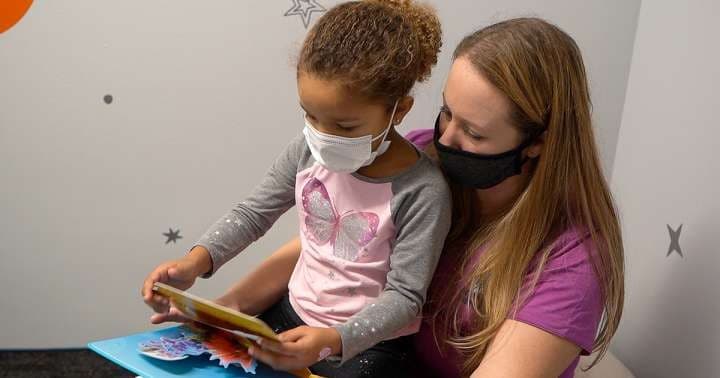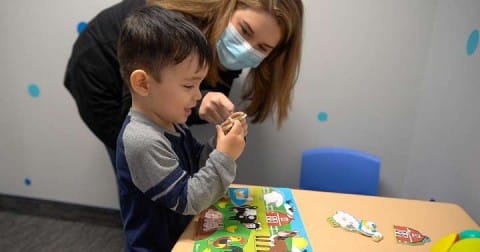Challenges Teens with Autism Face

Hanging out with friends after school and on the weekends is a vital part of a teen’s social life. But for teens with autism spectrum disorders (ASDs), social activity outside of school is a rarity, finds a new study by Paul Shattuck, PhD, autism expert and assistant professor at the Brown School at Washington University in St. Louis.
“We looked at data from the National Longitudinal Transition Study 2 (NLTS2), a group of over 11,000 adolescents enrolled in special education,” he says.
Managing Elopement in Children with Autism

If you have a child that elopes, you are probably all too familiar with the stress and worry that come with knowing your child may wind up in a dangerous situation within a blink of an eye. Elopement is a significant safety concern that can have deadly consequences.
You may have deadbolts and latches on your doors and windows. Going on vacation or visiting with friends or relatives may have you on high alert. You may often feel anxious and on edge with constantly having to monitor your child’s whereabouts.
Does Autism Go Away with Age?

It is not uncommon to question whether Autism spectrum disorder will “go away” or improve over time. In order to address the former, “can Autism spectrum disorder go away,” one must acknowledge that a diagnosis, while not a negative thing, is generally permanent across a person’s lifespan.
Can Autism Spectrum Disorder Improve with Age?
So to answer the latter of ‘will autism improve over time’, while Autism spectrum disorder cannot necessarily completely go away, in the full sense, the diagnostic symptoms described in the DSM-5 that separate children from their peers can be improved and, in fact, that is a very reasonable goal. This goal can be accomplished by clients, to the highest success, with the aid of early intervention and radical improvement due to the best treatment/intervention/practitioners.
What does ABA Therapy for Toddlers look like?

ABA or Applied Behavior Analysis is an evidence-based treatment for individuals with Autism Spectrum Disorder (ASD). Parents who might speculate their child is showing early signs of ASD should begin by getting a professional evaluation. Once a medical diagnosis is given for autism spectrum disorder, parents can consult with a qualified board-certified behavior analyst (BCBA). BCBA’s have extensive training in the principles of applied behavior analysis that has been successfully used in treatment for individuals with ASD.
A Parent’s Guide to Autism Spectrum Disorder

If your child has recently been diagnosed with autism spectrum disorder (ASD), there are likely many emotions you’re feeling and scenarios running through your mind. However, it can provide clarity and result in a starting point for navigating the next steps in your child’s life. Like many major life events, learning your child has autism will affect everyone in your family; even your network of friends. I
t’s no surprise that you will go through many new positive and challenging experiences, face many emotions and be forced to make many hard decisions. Caregivers often feel relief or comfort when their child is officially diagnosed as it solidifies and validates suspicions they’ve had, but also brings an overwhelming amount of stress and thoughts of “what do I do next?”
What is Autism Spectrum Disorder? A Guide
Autism spectrum disorder (ASD), or autism, is a developmental disability that refers to a broad range of characteristics that are categorized into two groups: deficits in social communication and restrictive/repetitive behaviors. Each of these categories outline a broad range (spectrum) of potential symptoms that one may display. Additionally, there are varying strengths and challenges an individual with autism faces and they are typically diagnosed with a severity level (level 1-3). According to the CDC, “People with ASD often have problems with social, emotional, and communication skills.
They might repeat certain behaviors and might not want change in their daily activities. Many people with ASD also have different ways of learning, paying attention, or reacting to things. Signs of ASD begin during early childhood and typically last throughout a person’s life.” Autism affects an estimated 1 in 54 children in the United States, which is twice as great as the 2004 rate of 1 in 26 (CDC, 2021). Autism is about four times more common among boys than girls, however, it occurs in all racial, ethnic and socioeconomic groups. Learn more about autism red flags here.
What is Autism?

Autism spectrum disorder (ASD), or autism, is a developmental disability that refers to a broad range of characteristics that are categorized into two groups: deficits in social communication and restrictive/repetitive behaviors. Each of these categories outline a broad range (spectrum) of potential symptoms that one may display. Additionally, there are varying strengths and challenges an individual with autism face and they are typically diagnosed with a severity level (level 1-3).
According to the CDC, “People with ASD often have problems with social, emotional, and communication skills. They might repeat certain behaviors and might not want change in their daily activities. Many people with ASD also have different ways of learning, paying attention, or reacting to things. Signs of ASD begin during early childhood and typically last throughout a person’s life.” Autism affects an estimated 1 in 54 children in the United States (CDC, 2021). Autism is about four times more common among boys than girls, however, it occurs in all racial, ethnic and socioeconomic groups.
Types of ABA Therapy Jobs and Their Degree Requirements

While there are many avenues in which applied behavior analysis (ABA) can be used and implemented in the professional world, there are a few traditional types of ABA therapy jobs that can be found when working with individuals with disabilities. In order to practice in each respective position, you must meet and maintain certain requirements. When providing services for individuals with autism, we typically see the following types of ABA therapy positions: behavior therapist (BT), Registered Behavior Technician (RBT), Board Certified Assistant Behavior Analyst (BCaBA), Board Certified Behavior Analyst (BCBA) and Board Certified Behavior Analyst-Doctoral (BCBA-D). Each position varies slightly from one another by educational requirements, certification requirements and maintenance requirements. The following outline of ABA therapy jobs is not exhaustive, however, these are typical ABA therapy jobs found in the realm of providing applied behavior analysis services to individuals with disabilities (i.e. autism spectrum disorder, intellectual disabilities). Typical Types of…
Getting Into the Field of ABA Therapy to Become an ABA Therapist

ABA therapy is a career field that is growing exponentially each year in the United States. As Autism diagnoses continue to increase each year, ABA therapy has become the gold standard of helping people with ASD learn skills to increase communication and social skills to become more independent. ABA, or applied behavior analysis is based in radical behaviorism, part of behavioral psychology. In ABA, practitioners use the premises of behavior analysis and apply them to teaching others. ABA is used in fields such as higher education, organizational behavior management, animal training, safety in the workplace, environmentalism and sustainability, medicine, and as it is most known for, autism therapy.
What is ABA Therapy?

In the past twenty years, ABA therapy has become a popular, effective, and surgeon-general approved therapy for Autism Spectrum Disorder, or ASD.
What Exactly is ABA Therapy and What Does it Stand For?
ABA stands for Applied Behavior Analysis, which is the science of learning and behavior. Behavior analysis helps us to understand behaviors, why they are occurring, how the environment can influence behavior, and how we learn new behaviors.
Food Selectivity in Children with ASD

It is estimated that 75% of children with ASD have limited food preferences (Maye & Calhoun, 1999). Insistence to sameness, restricted routines, and difficulty coping might be some symptoms of ASD that are directly correlated with restrictive food intake. The good news is that various disciplines (Speech Therapists, Occupational Therapists and ABA therapists working alongside Board Certified Behavior Analysts) can offer successful interventions towards increasing food acceptance. When looking at the social validity as to why increase the variety of food in a child’s food repertoire, there are many things to consider.
For example, one might say “leave the child alone; if they want to only eat pizza and French fries, then so be eat”. It’s the parents’ final decision if increasing food variety is significant to their family, but here are some other things that are connected to eating a limited variety of food: vitamin consumption might be lower, GI dysfunction, not enough nutrients, not enough fiber, and/or not enough protein.



